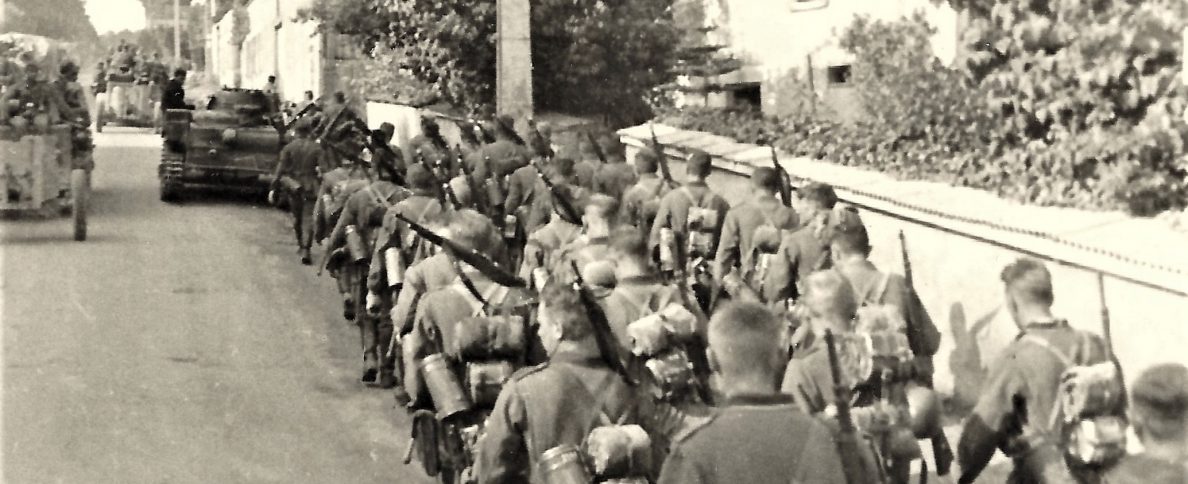Three German soldiers inspect a wrecked Polikarpov I-16 “Ishak” (“Donkey”). Another wreck can be seen in the background. The Soviet fighters were apparently destroyed on the ground in the early stages of Operation Barbarossa; the upturned earth to the right could be a bomb crater. 48 hours after the German invasion began, only 937 I-16s were left of the 1,635 planes in service on 21 June 1941. Many were destroyed on the ground when the Luftwaffe mounted massive strikes on Soviet airfields, while others were lost in combat. After a week, another 64 I-16s had been lost, and 99 needed repairs.
The pug-nosed fighter was a world first as a low-wing monoplane with retractable landing gear when it had its premier flight in 1933. It proved to be more nimble than its looks might make one think, but poor visibility from the cockpit and some quirks made it not the easiest plane to fly. It got its baptism of fire in the Spanish Civil War, where the USSR supplied the Republican side with 276 I-16s. It caused losses among the German biplanes flown by the Condor Legion for the Nationalist side, but when the Germans introduced the Messerschmitt Bf 109, the “Ishak” got problems. When the war ended on 1 April 1939, a total of 187 Ratas had been lost in Spain (one third in accidents).
 An I-16 flying over Stalingrad in the online air combat game “War Thunder”.
An I-16 flying over Stalingrad in the online air combat game “War Thunder”.
China got 250 I-16s to use against the Japanese invaders, but it couldn’t really compete against the Nakajima Ki-27. When the Germans invaded the USSR, the “Ishak” came up against even more modern adversaries, but apart for being a superior turn fighter, the enemy held the edge. When the I-16 couldn’t be upgraded with heavier armament or armor protection, it began to be replaced with new types. When it was removed from frontline use in 1943, about half of the more than 8,600 aircraft produced had been lost.


